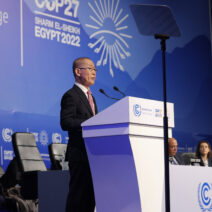As urban expansion persists, the prevalence of impermeable surfaces in cities is becoming more pronounced. These surfaces, which include concrete, asphalt, and rooftops, do not permit water to percolate into the ground. Instead, they create a rigid landscape that significantly alters local ecosystems and contributes to several environmental dilemmas, including exacerbating global warming. This article explores how impermeable surfaces are implicated in climate change through various mechanisms while examining potential mitigation strategies.
One primary concern associated with impermeable surfaces is the urban heat island (UHI) effect. Urban areas experience higher temperatures than their rural counterparts due to an extensive coverage of impermeable materials. These surfaces absorb and retain heat during the day, releasing it slowly at night. Consequently, cities can become up to 5-10 degrees Fahrenheit warmer than surrounding areas. This substantial temperature differential not only increases energy consumption for cooling but also leads to greater emissions of greenhouse gases from power plants that supply electricity for air conditioning.
Moreover, impermeable surfaces hinder the natural hydrological cycle. Under normal conditions, rainwater is absorbed by the soil, replenishing groundwater supplies and supporting vegetation. However, with an abundance of impermeable areas, rainwater is instead redirected into storm drains, leading to rapid runoff. This process ultimately contributes to flash flooding and pollutant runoff into water bodies, harming aquatic ecosystems. Furthermore, the diversion of stormwater can lead to diminished groundwater recharge, effectively diminishing an essential resource for both flora and fauna.
In addition to the UHI effect and its impact on the hydrological cycle, the presence of impermeable surfaces alters local atmospheric chemistry. The combination of excessive heat and low vegetation can lead to the proliferation of ground-level ozone, a secondary pollutant formed when sunlight reacts with volatile organic compounds (VOCs) and nitrogen oxides. Increased ozone leads to a myriad of health problems among urban populations, including respiratory issues, which can further burden healthcare systems.
Another factor to consider is the contribution of impermeable surfaces to enhanced carbon emissions. The production of concrete and asphalt is energy-intensive and carbon-emitting, adding to the overall greenhouse gas footprint of urban areas. As cities grow and expand, new roads, parking lots, and buildings further entrench the role of impermeable surfaces as significant contributors to climate change. The lifecycle emissions related to these materials cannot be overlooked in discussions addressing urban sustainability.
A grim yet undeniable truth is that our reliance on these artificial structures is often underpinned by a lack of awareness regarding their long-term environmental consequences. As urban planning evolves, there is a pressing need for stakeholders—from city planners to community members—to reevaluate the way impermeable surfaces are conceived and implemented. A judicious approach might involve integrating permeable alternatives or enhancing urban green spaces that can absorb rainwater and reduce heat buildup.
Permeable paving systems, if widely adopted, could serve as innovative solutions to counteract the adverse effects of impermeable surfaces. These materials allow water to infiltrate, minimizing runoff while promoting groundwater recharge. Through adopting such technologies, cities can significantly mitigate UHI effects, ultimately contributing to the overall reduction in urban temperatures. Emphasizing green infrastructure—such as green roofs, rain gardens, and urban tree canopies—also aligns with sustainable urban design, enhancing biodiversity and improving air quality.
Educating communities about the implications of impermeable surfaces is equally important. Awareness campaigns can promote the benefits of sustainable practices, encouraging residents to advocate for policies that favor permeable designs. Local governments can play a crucial role in this educational effort, ensuring that residents understand the long-term benefits of investing in green infrastructure.
Moreover, policies can be crafted to impose stricter regulations on the extent of impermeable surfaces in new developments. Incentivizing developers to incorporate permeable designs could not only mitigate stormwater runoff but also improve the aesthetic appeal of urban environments. The implementation of green building certifications that prioritize low-impact development practices could encourage an industry-wide shift toward sustainability.
However, it must be acknowledged that replacing existing impermeable surfaces poses financial and logistical challenges. Retrofitting urban infrastructure demands substantial investment and community buy-in. Despite these obstacles, the benefits of pursuing permeable solutions are manifold and merit serious consideration. The intersection of environmental stability and economic revitalization can provide a strong argument for investing in sustainable urban design.
As the impact of climate change increasingly manifests in extreme weather events, addressing the role of impermeable surfaces becomes crucial. The science is clear: to combat the dire consequences brought about by global warming, we must reconsider how we construct our cities. The prevalence of impermeable surfaces serves as a stark reminder of our urban planning choices—and the urgency with which we must act.
In summary, the efficacy of sustainable urban design hinges on recognizing the detrimental consequences of impermeable surfaces. As cities continue to expand, it is incumbent upon us to gravitate toward ecologically informed practices that prioritize permeability, promote green infrastructure, and build resilient communities. Each step taken towards addressing the perils of UHI effects, the alteration of the hydrological cycle, and the amplification of greenhouse gas emissions reflects our commitment to environmental stewardship and a sustainable future.




